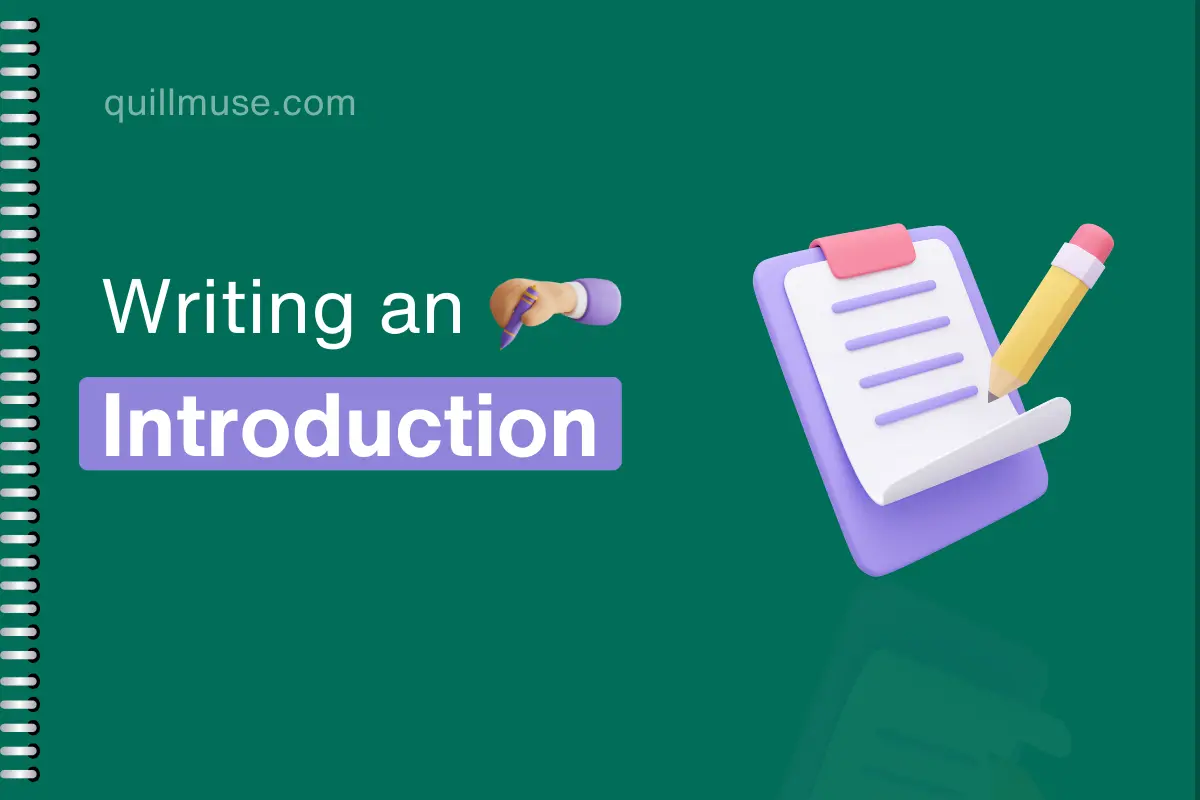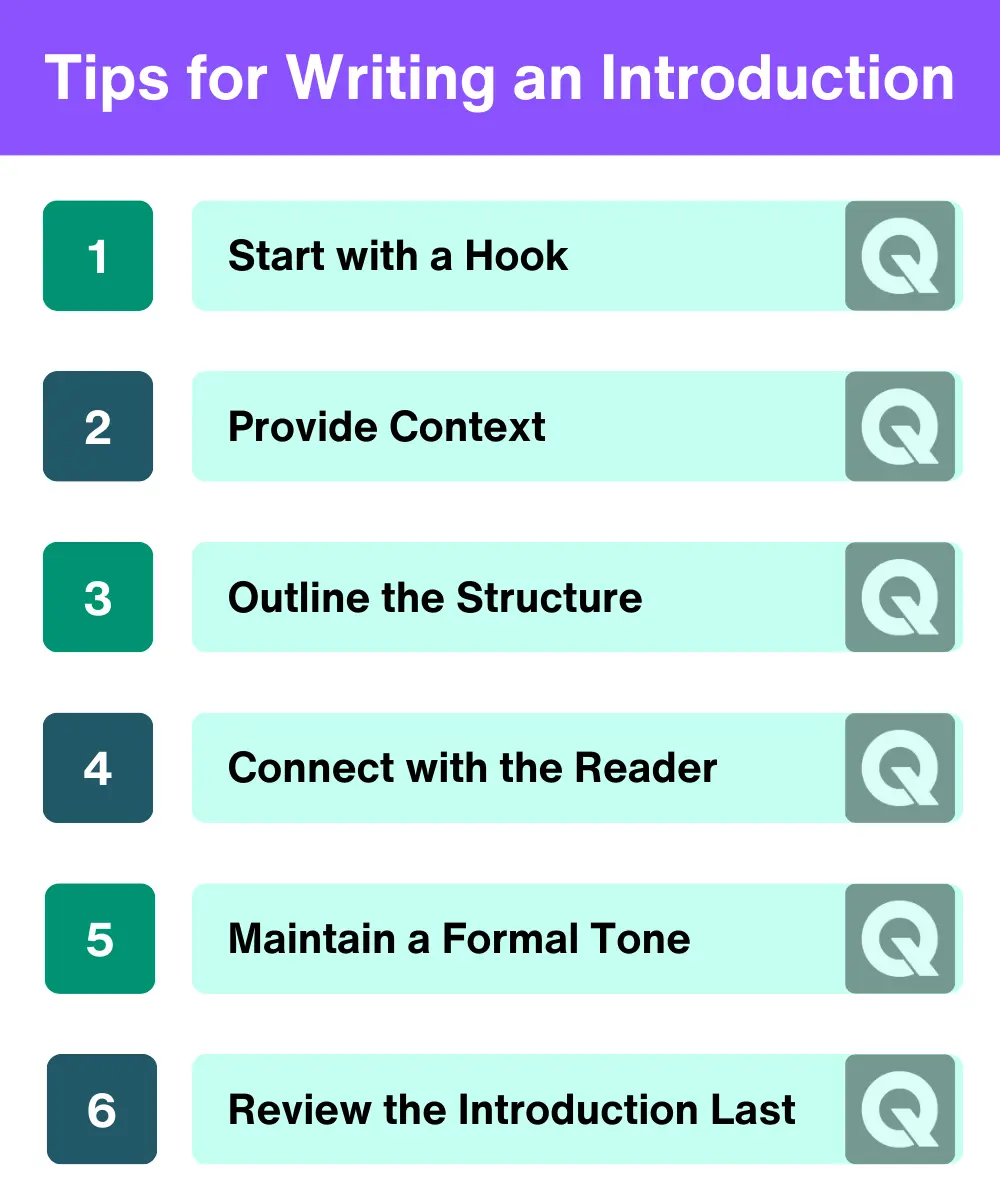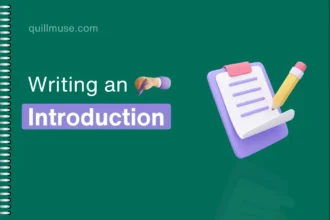How to Write an Introduction
Learn the art of crafting compelling introductions with our guide on how to write an introduction.

Rijvi Ahmed
Last updated on Mar 13th, 2024

When you click on affiliate links on QuillMuse.com and make a purchase, you won’t pay a penny more, but we’ll get a small commission—this helps us keep up with publishing valuable content on QuillMuse. Read More.
Table of Contents
Do you know that the introduction to your article can make or break its success? This is because the introduction is the first thing your audience encounters. They might not stick around to read the rest of your article if it does not grab their attention.
On the other hand, a great introduction can hook your audience and keep them engaged until the end. But the problem is many of us don’t know how to write an introduction. I’ve noticed that students often struggle with writing good introductions to their essays and they don’t know how to write an introduction.
Understanding how to write an introduction paragraph is a wonderful skill, not just for writers, but for students and researchers as well. Here, we describe everything you must know to write the best introduction, including what to include and a step-by-step strategy, with some introduction paragraph examples.
Let’s break down exactly how to write an introduction. Which is short, effective, and relatively easy.
What is an introduction?
Are you struggling with writing a compelling introduction for your essay or article? If so, don’t worry! The introduction is a critical part of any written work, and it requires careful thought and planning to create an engaging and informative opening that will hook your readers and keep them interested.
An introduction is the opening part of an essay, article, or any other written work that sets the tone, establishes the context, and provides the necessary background information to the readers. Its primary purpose is to grab the reader’s attention and make them interested in reading further.
A good introduction should include a hook, background information, thesis statement, scope of the essay, and transition. All these elements work together to create a captivating introduction that sets the stage for the rest of the work.
How to write an introduction
A good introduction is designed to grab the reader’s attention provide the necessary context and set the stage for the rest of the essay. To achieve that the introduction should include a hook, background information thesis statement scope of the essay, and transition.
Now if you know how to write these five elements you will produce a captivating
Introduction. So let’s dive into each of these Concepts in more detail.
no matter in which style you are writing or what kind of paper you’re writing, a good introduction includes at least these three parts:
1. A hook to catch the reader’s engagement
The hook is the opening line or sentence of your introduction that grabs the audience’s attention and makes them want to keep reading. One effective way to do this is by using a hook that will make the readers sit up and take notice.
You could use a surprising statistic, a personal anecdote, or a thought-provoking question to pique their interest and draw them into your post.
2. Detail the context and purpose of the writing
A strong introduction not only hooks the reader but also provides a clear picture of what they can expect from the rest of the post. After creating a compelling hook, it’s crucial to detail the purpose of your post and let the readers know what you’re going to be writing about.
To do this effectively, you need to be clear and concise in your language and ensure that your message is easily understandable. If you’re addressing a problem in your post, make sure to communicate it in a way that resonates with your readers and motivates them to keep reading. Remember, the introduction is your chance to make a strong first impression, so make sure it’s well-crafted and compelling.
3. A clearly described main point of your writing
The introduction of an article can indeed make or break its success. After all, it is the first thing that readers encounter and it’s what will grab their attention and keep them engaged.
Once you’ve crafted a solid hook, it’s important to detail the purpose of your post and let readers know what to expect. This is especially important if you’re writing about a problem you want to bring attention to. Make sure your language is clear and easily understandable to your readers.
Related: 12 Creative Writing Tips for Beginners to Be Expert
Tips for writing an introduction

I’ll be sharing some tips that will help you create an introduction that will keep your readers hooked. Whether you’re writing a blog post, an academic paper, or a news article, these tips will help you create an introduction that is specific, valuable, and succinct.
Writing an effective introduction is crucial as it sets the tone for your entire essay or paper. Here are some tips to help you craft a compelling introduction:
- Start with a Hook: Begin with a captivating statement, question, quote, or anecdote that grabs the reader’s attention. A strong hook encourages the reader to continue reading.
- Provide Context: Offer some background information or context related to your topic. This helps readers understand the subject matter and its relevance.
- Outline the Structure: Briefly outline the structure of your essay, mentioning the main points or sections you will discuss. This gives readers a roadmap for what to expect.
- Be Concise: Keep your introduction concise and focused. Avoid unnecessary details or information that doesn’t directly contribute to setting up your thesis.
- Avoid Vague Language: Be specific in your language. Avoid vague statements that might confuse the reader. Convey the purpose and scope of your essay.
- Consider Your Audience: Think about who your audience is and tailor your introduction to appeal to them. Consider what information they might find interesting or relevant.
- Revise and Edit: Your introduction can be flawed on the first draft. Revise and edit to ensure clarity, coherence, and a smooth flow of ideas.
- Connect with the Reader: Establish a connection with your audience. Help them relate to your topic by addressing common experiences or concerns.
- Maintain a Formal Tone: Keep your tone appropriate for the type of essay you’re writing. For academic papers, maintain a formal and objective tone.
- Avoid Clichés: Try to avoid using cliches or overused phrases in your introduction. Aim for originality to engage your reader.
- Review the Introduction Last: Sometimes it’s helpful to write the introduction after you’ve drafted the main body of your essay. This way, you have a clearer understanding of what you’re introducing.
Remember that an effective introduction not only grabs attention but also sets the stage for the rest of your writing. It should provide a clear roadmap for your readers and motivate them to continue exploring your ideas.
Introduction for an essay example
Certainly! Let’s consider an example introduction for an essay on the impact of social media on society:
“In the span of just a few decades, the advent of social media has fundamentally transformed the way we connect, communicate, and consume information. As we navigate this digital frontier, it becomes increasingly imperative to critically examine the profound effects of social media on our society. This essay delves into the multifaceted impact of social media, exploring its influence on interpersonal relationships, societal perceptions, and the very fabric of our daily lives.
From reshaping the dynamics of communication to redefining notions of privacy, the consequences of the social media revolution are far-reaching and merit a closer examination. In this exploration, we seek not only to understand the mechanisms driving these changes but also to navigate the complexities that arise in an era where the virtual and the tangible are inextricably intertwined.”
This introduction incorporates a hook (“The Social Media Revolution: Navigating the Digital Frontier”), provides context about the topic, introduces the main areas of exploration, and sets the stage for a deeper examination of the impact of social media on society. Remember to adapt the style and content based on the specific requirements and nature of your essay topic.
Introduction for a research paper example
Certainly! Let’s consider an example introduction for a research paper on climate change and its impact on biodiversity:
“The accelerating pace of climate change in recent decades has emerged as one of the most pressing challenges facing our planet. As greenhouse gas emissions continue to rise, the intricate web of life on Earth faces unprecedented threats. This research paper seeks to unravel the intricate relationship between climate change and biodiversity loss, delving into the mechanisms driving these changes and the far-reaching consequences for ecosystems worldwide.
From shifts in habitat ranges to the alarming increase in extinction rates, the interconnectedness of climate and biodiversity poses a critical challenge that demands immediate attention. By examining the current state of knowledge, identifying gaps in understanding, and proposing avenues for mitigation and adaptation, this paper aims to contribute to the growing body of research dedicated to addressing the global implications of climate change on biodiversity.”
This introduction sets the stage for the research paper by addressing the broader context of climate change and its connection to biodiversity loss. It outlines the purpose of the paper, which is to explore the mechanisms, consequences, and potential solutions related to the impact of climate change on biodiversity. Remember to tailor the introduction to your research paper’s specific focus and objectives.
Related: How to Write a Research Paper Introduction
FAQs
What is an introduction in writing?
An introduction in writing is the opening paragraph or section of an essay, article, or any written work that provides an overview or background information about the topic being discussed.
What is the purpose of an introduction?
The purpose of an introduction is to grab the reader’s attention, provide context and background information about the topic, and present the thesis statement or main argument of the piece.
What should be included in an introduction?
An introduction should include a hook or attention-grabbing statement, background information about the topic, and a clear thesis statement that presents the main argument or purpose of the piece.
How long should an introduction be?
The length of an introduction depends on the length and complexity of the piece being written. As a general rule, an introduction should be around 10% of the total word count of the piece.
Can an introduction be revised after the rest of the piece is written?
Yes, it is common to revise and edit the introduction after the rest of the piece is written to ensure that it accurately reflects the content and purpose of the piece.
How we've reviewed this article
Our content is thoroughly researched and fact-checked using reputable sources. While we aim for precision, we encourage independent verification for complete confidence.
We keep our articles up-to-date regularly to ensure accuracy and relevance as new information becomes available.
- Current Version
- Mar 13th, 2024
- Jan 22nd, 2024



